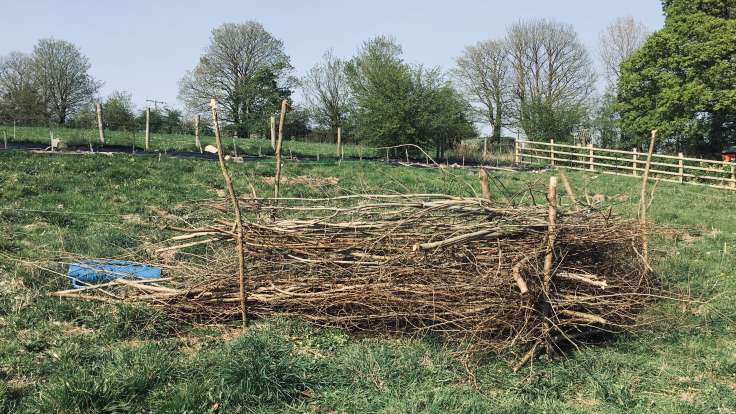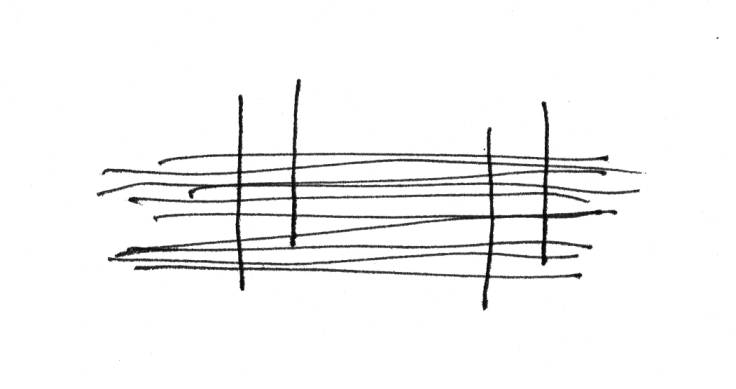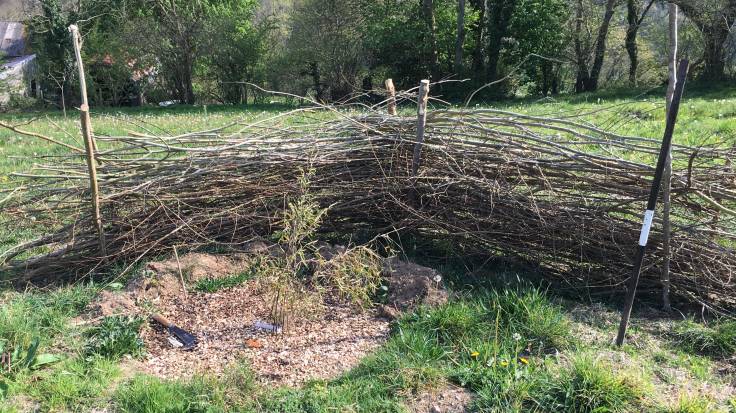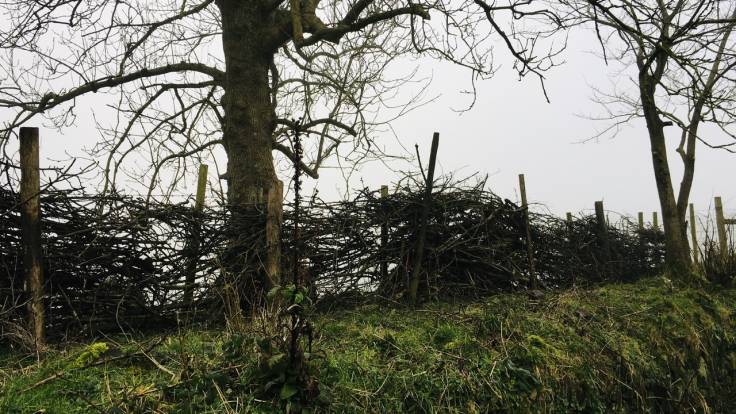
Dead hedge in the Ornamental Forest Garden, protecting a bamboo
A dead hedge, made from posts and scrubby branches, is an ideal temporary windbreak and wildlife habitat.
The benefits of a dead hedge, made from cut branches and foliage are:
- Windbreak shelter for young plants whilst windbreak hedges establish
- Habitat and food source for wildlife
- Uses up surplus cuttings rather than have a bonfire
- Put Bindweed, Bramble & Bitter Dock roots on top to dry out, no need to throw away
They are simple to make: put posts (preferably Larch or Sweet Chestnut as last longer) in pre-made holes with a post hammer and pile up the branches inbetween the posts.

The essence of a dead hedge is captured in this primitive yet adequate illustration
We planted a Yushania anceps ‘Pitt White’ bamboo in the Ornamental Forest Garden but it’s been battered a bit by winds, as the windbreak hedges have yet to get established, and the Broom nurse trees aren’t in place yet. So a dead hedge is an ideal solution.

The other side of the dead hedge, showing the weak and poorly bamboo
Top tips
- Build the dead hedge near to where you are cutting the branches.
- Use existing stock fencing as one side of the dead hedge.
The dead hedge will take a while to decompose, as the branches aren’t touching the ground. It provides ideal shelter for insects, small birds and small mammals, plus you can top the hedge with more cuttings when it starts to reduce in bulk.

A dead hedge built with a stock fence on the outer side